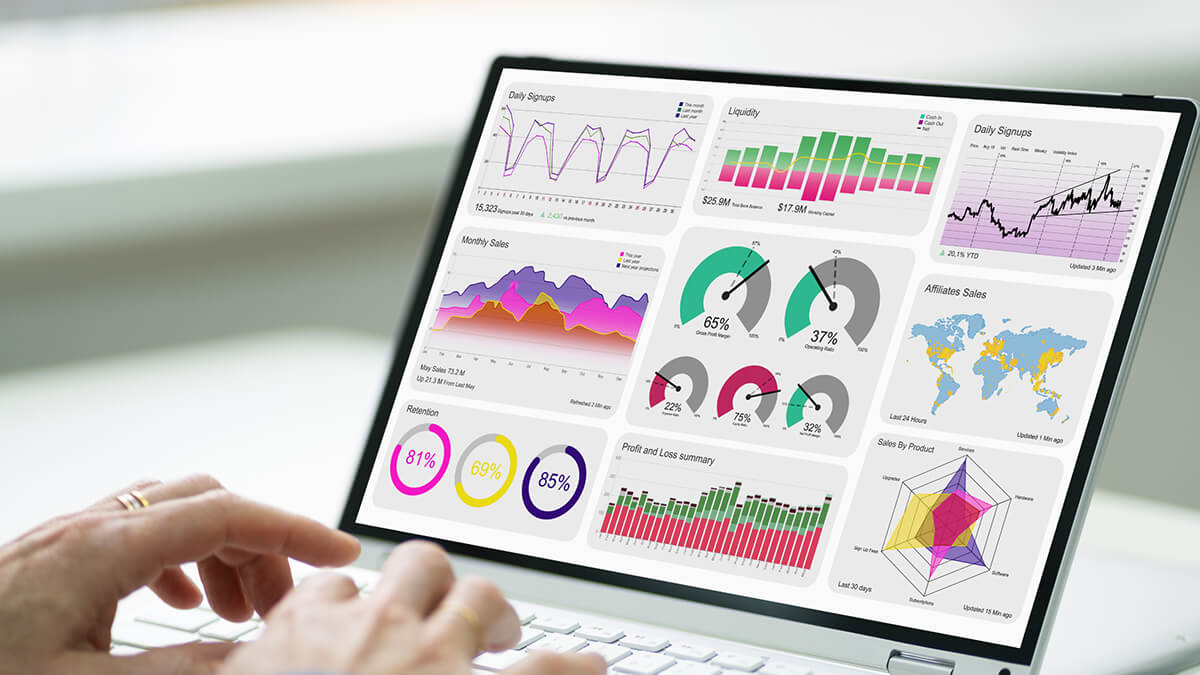Whether you have big goals of growing your business or you’re simply trying to sustain your current success, bringing in new business leads is just as important as engaging your existing customers. Why? Because without a steady influx of new leads, your business may struggle to grow and thrive.
New leads help sustain growth and will eventually bring about long-term success for your business. So how do you find these people? One way to bring in more customers is to execute a lead generation campaign. It’s the first part of a buyer’s journey toward becoming a loyal customer.
If you aren’t familiar with lead generation campaigns, read on for our top tips for bringing in high-quality leads that will convert new customers for your business.
What is the Goal of Lead Generation?
Lead generation is the process of attracting potential customers (leads) to your business and converting them into actual customers. This involves using multiple marketing strategies and tools designed to capture interest and gather information from people who are likely to buy your products or services. The more leads you generate, the higher your chances of increasing sales and growing your business.
Defining “Qualified Leads”
Not all leads are created equal, though, and you want to put the majority of your time and energy into those who are most likely to convert to customers. A “qualified lead” is someone who has shown a genuine interest in your product or service and fits your target customer profile. These leads are more likely to convert into paying customers. Identifying and nurturing qualified leads should be the primary focus of your lead generation efforts.
Common Types of Qualified Leads
- Marketing Qualified Leads (MQLs): MQLs have engaged with your marketing efforts but are not yet ready to buy. They have shown interest by downloading content, attending a webinar, or filling out forms. These people need further nurturing to move them through the sales funnel.
- Sales Qualified Leads (SQLs): SQLs are leads that have been vetted by the sales team and are ready for direct sales contact. They have demonstrated a clear desire to purchase, often through actions like requesting a demo, a free trial, or a meeting with a sales rep.
- Product Qualified Leads (PQLs): PQLs have experienced your product firsthand and have indicated a high likelihood of purchasing. PQLs are particularly relevant for SaaS and other software-based businesses.
How to Generate Leads For Your Business

Define Your Target Audience
Every business owner should have a strong understanding of who their ideal customers are. Think about the age, gender, location, interests, and buying behavior of your ideal customer. The better you understand your target audience, the more effectively you can tailor your lead generation strategies to attract them.
Set Clear Goals and Objectives
What do you want to achieve with your lead generation campaign? Do you want to significantly increase your website traffic? Grow your email list by 30 percent? Promote a new product or service? Setting clear, measurable goals will help you stay focused and track your progress.
Aligning Your Marketing Team and Sales Team
Your marketing team and your sales team both play important roles in the process of capturing and nurturing new leads. Collaboration between these two teams can make all the difference in a successful lead gen campaign.
Typically, marketing generates leads, and sales convert them into customers. Make sure both teams are aligned on goals, strategies, and metrics to streamline the process.
Create Valuable Content
Content is king when it comes to generating leads. Consumers want to see valuable, informative, and engaging content that addresses their needs and pain points. This can be something like a blog post, eBook, webinar, or video that you can offer in exchange for their contact information.
Examples of Lead Generation Offers
Here are some examples of popular content to attract leads:
- Ebooks and Whitepapers: Offering in-depth guides or reports on topics your audience cares about can be a great way to capture leads. Just make sure the content is actually valuable and solves a problem for your potential customers.
- Webinars and Online Workshops: For service-based businesses, webinars are a great way to provide valuable information and allow for direct interaction with potential leads.
- Free Trials and Demos: Offering a free trial or demo of your product or service allows potential customers to experience its value firsthand. This has proven to be a successful way to convert leads into paying customers.
- Discounts and Coupons: Exclusive discounts or coupons can entice visitors to provide their contact information in exchange for a deal. This is a popular strategy for e-commerce businesses.
- Templates and Checklists: Providing ready-to-use templates or checklists that help your audience perform specific tasks can be a highly attractive offer. These resources should be directly related to the challenges your audience faces.
Use Multiple Channels

Don’t put all your eggs in one basket. Utilize various channels to reach potential leads, including social media, email marketing, content marketing, and PPC advertising. Diversifying your channels increases your chances of reaching a broader audience.
Tip: Email marketing remains one of the most effective lead generation strategies. Build an email list and send personalized, valuable content to your subscribers. Use lead generation software to automate and optimize your email campaigns.
Optimize Your Landing Pages
A landing page is a dedicated web page where you can capture a visitor’s information through a form. Your landing pages help convert visitors into leads. They should be visually appealing, easy to navigate, and have a clear call to action. Offer something valuable, like a free trial or a discount, to encourage visitors to provide their contact information.
The right call to action (CTA) can make or break your lead generation efforts. Use clear, action-oriented language and make your CTAs stand out. Test different versions to see what works best.
Track and Analyze Campaign Performance

As with any type of marketing campaign, tracking your lead generation efforts will allow you to make continuous improvements to your strategy. You can use analytics tools to monitor metrics like conversion rates, click-through rates, and cost per lead. This will help you identify what’s working and what needs adjustment.
Based on your analysis, you can make adjustments to optimize your lead gen campaigns. This might involve tweaking your content, targeting different audiences, or trying new channels.
Finding the Right Lead Generation Tools
Creating, executing, and tracking a successful lead gen campaign can be a lot of work, but tools like CRMs and email marketing platforms can help by organizing and tracking customer interactions, automating communication, and personalizing outreach.
Below are just a few examples of lead gen tools to consider:
1. Customer Relationship Management (CRM) Software
A CRM system helps you manage and analyze customer interactions and data throughout the customer lifecycle. Here are a couple of top options:
- HubSpot CRM: Offers free and premium plans with features like contact management, email tracking, and pipeline management.
- Salesforce: A comprehensive CRM solution with advanced features for sales automation, customer service, and marketing.
2. Lead Generation Software
These tools are specifically designed to help you capture and manage leads more effectively.
- LeadPages: A tool for creating high-converting landing pages to capture leads.
- OptinMonster: Helps you design and implement lead capture forms on your website to turn visitors into subscribers.
3. Email Marketing Platforms
Email marketing helps to nurture leads and keep them engaged. Here are some popular email marketing platforms:
- Mailchimp: Offers email marketing, automation, and analytics to help you manage your email campaigns.
- Constant Contact: Provides email marketing, social media integration, and detailed analytics.
4. Analytics Tools
To measure the effectiveness of your lead generation efforts, you need a comprehensive analytics tool. Check out these options:
- Google Analytics: A free tool that provides insights into website traffic and user behavior.
- Hotjar: Offers heatmaps, session recordings, and surveys to understand user interactions on your website.
Turning Leads into Customers

Generating leads is just the beginning; converting them into paying customers is the real goal. Here are some tips for turning leads into loyal customers:
- Nurture Leads with Personalized Content: Tailor your messaging to address the specific needs and interests of your leads. Send personalized emails, recommend relevant content, and offer solutions that solve their problems.
- Implement Lead Scoring: Prioritize leads based on their likelihood to convert by assigning scores based on their behavior and engagement. Focus your efforts on high-scoring leads first to maximize conversion rates.
- Provide Excellent Customer Service: Be responsive and helpful throughout the decision-making process. Excellent customer service can make a significant difference in converting leads into customers.
- Use Retargeting Campaigns: Keep your brand top-of-mind with retargeting ads for leads who have shown interest but haven’t yet converted. Remind them of your products or services to encourage action.
- Create a Sense of Urgency: Encourage quick decisions with limited-time offers and exclusive discounts. Genuine urgency can motivate leads to take the next step sooner.
- Follow Up: Develop a follow-up strategy that includes emails, phone calls, and social media interactions. Make sure your follow-ups add value and address any concerns leads may have.
- Simplify the Buying Process: Make the buying process easy and straightforward. Minimize steps, offer multiple payment options, and provide clear instructions to reduce friction.
Increase Your Revenue With a Successful Lead Generation Campaign
Generating leads is a must for any business that wants to continue growing and thriving in a competitive market. Whether you’re focused on growing your business or maintaining your current momentum, bringing in new leads is just as important as keeping your existing customers engaged. Implement a well-thought-out lead generation strategy and you’ll be on your way to a steady stream of potential customers and long-term success for your business.







